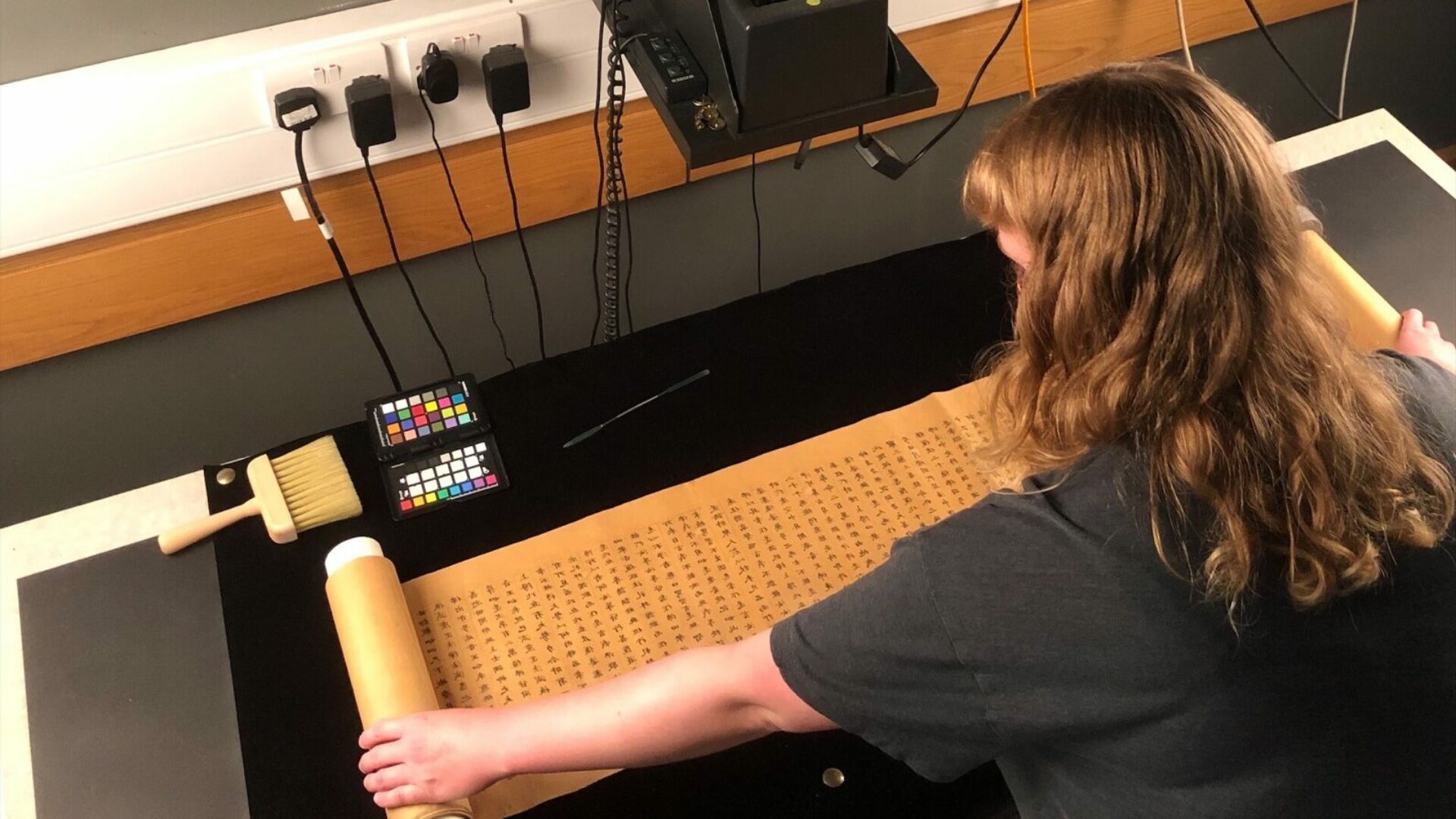Working with digital copies of the items means we can avoid wear and tear to the originals. We can consult documents that are held in different institutions, without having to travel from our own desks.
We can compare documents that under normal circumstances would be hard to view simultaneously. For example, small fragile fragments are often kept in protective enclosures that can be quite bulky, so it can be hard to consult several at once. Similarly, it can be rewarding to compare different panels from the same scroll, but unrolling a long stretch of a scroll at once is very risky for the item and never recommended.
Studying a digitised version can also bring to light details that we might overlook on the original item. Specialist techniques like infrared photography can bring out aspects invisible to the naked eye, like the ‘ghost folios’ of the Sanskrit Lotus Sutra described by Paul Harrison.
Digitisation, however, is a large task. We want to be able to study from these digital surrogates for a long time in the future, so we need high quality, high resolution images, made to a consistent standard. Making these requires significant expertise, very expensive photographic equipment, and a lot of digital storage space.
The digitisation process can be quite risky for fragile documents. However careful you are, any handling will cause a small amount of wear, so we plan carefully to minimise the number of times the items need to be handled. We also need to assess the needs of each individual item before digitisation – often they will need to go through conservation first, so that any existing damage is stabilised.
We use special lights sparingly, in order to not cause light or heat damage, and to avoid glare when items are kept in transparent enclosures. To keep scrolls or folded items open and flat enough for scanning without causing undue strain, we use soft supports such as foam wedges, book pillows, and fabric covered weights.
Scrolls are not fully unrolled for digitisation: they are photographed panel by panel. In order for researchers to get a sense of the physical continuity of text in a scroll, we create “stitched” images that are a digital representation of the entire scroll, front and back.
This blog post on How to Digitise Scrolls from Jon Nicholls, a Senior Imaging Technician on the Lotus Sutra Project, explains the process of digitising a scroll in detail.
While scrolls make up the majority of the items in the IDP collection, there are many other formats that need special attention.
These include texts in booklet or concertina form, smaller written items like woodslips or leaves of a pothi manuscript, textiles, fresco style paintings, and objects collected during archaeological expeditions. Many are only small fragments. All of these items need specific and careful attention to ensure that the digitised surrogate accurately reflects their particular characteristics.
